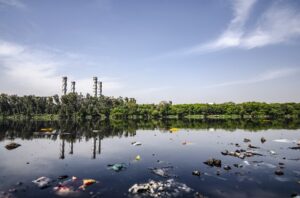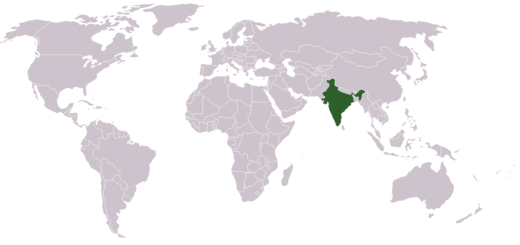Pollution

Summary
These human as well as natural activities have been continuously bringing about degradation of the environment. Such changes have spoil the quality of the environment thereby affecting the life of organisms. Any such undesirable change in the air, water or soil which disturbs the delicate balance of the natural environment is called pollution.
Any substance that causes pollution is a pollutant. A pollutant may be in the form of a solid (dust) or a liquid (detergent) or a gas (carbon dioxide). a pollutant source may be physical (heat), chemical (fertilizers) or biological (pollen dust).
Any pollutant when converted into its harmless state through the activity of organisms(chiefly micro organisms) is called a biodegradable pollutant. example kitchen waste Human and animal wastes (undigested food) and domestic sewage.
Any pollutant which is not converted into its harmless state by organisms and remains unchanged for a long time is called a non-biodegradable pollutant. Example: Heavy metals(elements with high atomic mass) like lead and mercury, rubber, aluminium cans and pesticides like DDT.
The different types of pollution are
1. Air Pollution : Any undesirable change in the quality of air that affects the well being of organisms, including human is called air pollution.
Causes of air pollution:
- Fuels used in industries, vehicles and thermal power plants emit carbon dioxide, carbon monoxide, sulphur dioxide, nitrogen oxides and other gases as well as small particles.
- Chemical pesticides and insecticides sprayed on crops.
- Carbon dioxide and methane released into the air during the decay of organic matter such as fallen leaves and food waste.
- Dust particles produced during construction activities such as roads, buildings and factories.
- Carbon dioxide, carbon monoxide and small particles released by burning wood, agricultural waste and dung cakes.
- Natural release of pollen grains from flowers, fungal spores, gases from volcanic activities and dust from cyclones.
Effects of air pollution
- Air pollution affects health of human beings. It affects the respiratory organs(lungs). It causes diseases such as asthma, bronchitis, allergy, carbon monoxide blood poisoning and even cancer.
- Air pollution harms agricultural crops and other plants and reduces their yield.
- Sulphur dioxide and nitrogen oxides may cause acid rain.
- Air pollution increases the green house effect which further causes global warming.
GREEN HOUSE and GREEN HOUSE Effect

In cold countries, seeds do not germinate easily. In order to provide warm conditions, plastic or glass houses are built. These are called green houses. plastic or glass, traps the heat and does not allow the heat to escape. This keeps the green house warm and permits seed germination.
It produced when air pollutants such as carbon dioxide, methane and oxides of nitrogen along with water vapour do not allow the heat to escape from the atmosphere, thus increasing the atmospheric temperature. This is called green house effect. The gases which cause this effect are called green house gases.
What is global warming ?

Global warming is a process of continuous increase in global temperature leading to climate change. It is a result of excessive green house effect. Due to global warming, productive crop lands may become unfertile. Sea level may increase flooding coastal areas. Soil may get eroded.
How to reduce air pollution?
- Decreasing emissions from industries and motor vehicles using clean technologies and regular maintenance of engines.
- using fuels which emit less pollutants. For example kerosene, Liquified Petroleum Gas(LPG) or lead-free petrol.
- using public transport like buses and trains, and minimizing the use of private vehicles like cars, motorcycles etc.
- decreasing the use of pesticides and insecticides.
- using renewable sources of energy such as solar energy, wind energy and bio gas
- avoiding bursting of crackers
- growing more trees which act as screens or insulators against dust and other particles and even absorb pollutants like oxides of sulphur.
- Strict enforcement of the anti-pollution laws. Know this : Endosulfan is a chemical pesticide used in agriculture.
2.Water pollution

The physical, chemical and biological properties of water that affects the organisms including humans is called water pollution.
CAUSES OF WATER POLLUTION
- Industrial wastes (effluents) containing harmful chemicals.
- Industrial discharge of hot water into the water bodies.
- Domestic wastes and sewage containing harmful microorganisms and detergents (chemicals).
- Seepage of water containing fertilizers, pesticides and weedicides from agricultural fields and entry of agricultural wastes.
- Discharge of mining wastes.
- Oil spillage.
Effects of Water pollution
- Polluted water is unsuitable for drinking and other domestic activities, agricultural practices and even for aquatic organisms.
- Harmful micro-organisms present in water may cause several water borne diseases such as diarrhoea, jaundice, typhoid and others.
- Harmful chemicals present in water even kill plants and animals.
- Death of fishes has been reported in several water bodies due to harmful chemicals. Pollution of water results in reduction of dissolved oxygen in water. This affects survival of aquatic organisms.
- chemicals may cause nervous disorders, affect vital organs such as liver and kidney to bring about permanent damage to the body.
Bio magnification:

At every stage, pollutants become more concentrated (magnified), thus causing harm to humans and other living organisms. This phenomenon is called Bio magnification.
How to reduce Water pollution?
- Purify sewage water before releasing into natural water bodies.
- cooling the over-heated waste water from industries before letting into water bodies.
- decreasing the over-use of fertilizers and pesticides, and controlling the flow of water from agricultural fields into the natural water bodies.
- strict enforcement of anti-water pollution laws.
SOIL POLLUTION

Any undesirable change in physical, chemical or biological properties of soil that affects the wellbeing of organisms including humans is called soil pollution.
Causes of soil pollution
- Dumping of solid wastes including garbage, discharge of sewage(liquid) and chemicals from domestic source.
- Excessive use of fertilizers and pesticides in agriculture.
- Letting out untreated industrial wastes having harmful chemicals.
- Acidification of soil.
- Addition of non-biodegradable wastes like plastic and foam.
Effects of soil pollution :
- Soil pollution reduces soil fertility and decreases the crop yield.
- Harmful chemicals in the soil get into the plants and their products such as seeds, fruits, vegetables and grains. When animals including human beings consume these, their health is affected.
- Soil pollution affects useful organisms such as earthworms, ants and others.
- The polluted soil becomes unuseable.
HOW TO REDUCE SOIL POLLUTION?
- Decreasing the generation of waste and reusing the materials as much as possible
- separating the wastes into biodegradable, non-biodegradable and hazardous wastes, and disposing them using scientific methods.
- decreasing the over use of fertilizers and pesticides in agriculture. y using compost, bio fertilizer and natural pesticides like neem cake
- disposing the industrial wastes properly. y growing and maintaining plants that absorb some of the pollutants. Ex : Rubber plant y strict enforcement of pollution control laws.
Exercise
Four alternatives are given under each complete/incomplete statement. Choose the correct answer
- A reason for pollution which may not be always natural
is
a) forest fire b) volcano
c) tsunami d) mining
Ans:d)Mining
- The common name for the unavoidable end product of
human activity that spoils the quality of biosphere is
a) pollution b) pollutant
c) forest fire d) DDT
Ans:d)DDT
- One of the following is a biodegradable pollutant.
a) DDT b) kitchen waste
c) lead d) mercury
Ans:b)Kitchen waste
4.One of the following is not a pollutant discharged from
industries.
a) sulphur dioxide b) nitrogen oxide
c) carbon dioxide d) sewage
Ans:Sewage




























